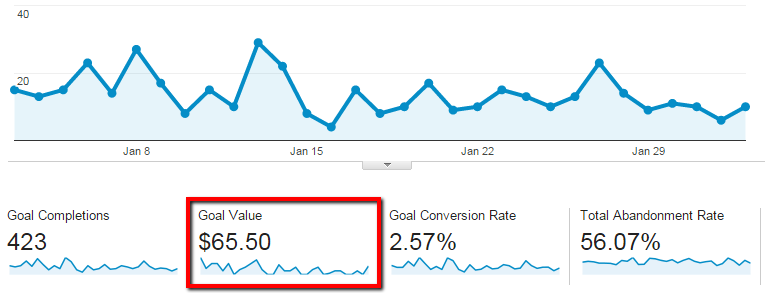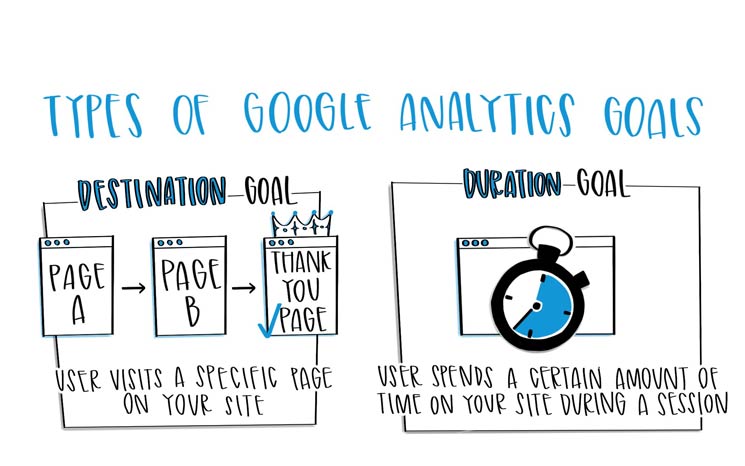Discovering What Data Is Google Analytics Goals Unable to Track
Discovering What Data Is Google Analytics Goals Unable to Track
Blog Article
Discover the Limitations of Google Analytics Goals: Introducing the Information Kind That Remain Untrackable
As companies increasingly rely upon data-driven decision-making, recognizing the restrictions of tools like Google Analytics becomes critical. While Google Analytics Goals offer useful insights right into user interactions, there exist data kinds that elude tracking, posturing difficulties to an extensive understanding of customer habits. These untrackable information kinds increase questions about the precision and completeness of the analytics data that companies heavily trust for their digital strategies. Curious to discover the concealed unseen areas in your data analysis procedure?
Incomplete User Journey Tracking
Insufficient individual trip tracking within Google Analytics can impede the capacity to accurately assess individual habits. When the user journey is not fully tracked, there are spaces in the data that prevent a thorough understanding of how users connect with an internet site. This absence of insight can lead to missed chances for optimization and improvements to the individual experience.
One usual problem with insufficient customer journey monitoring is the lack of ability to see the complete course that individuals take in the past finishing a goal or leaving the site. Without this information, it is challenging to identify where individuals may be running into obstacles or rubbing factors that prevent them from converting. Furthermore, incomplete monitoring can cover the influence of specific marketing initiatives or website adjustments on customer habits.
To address this limitation, it is critical to set up proper monitoring systems within Google Analytics to catch the whole individual trip. This might involve establishing up event tracking, objective funnels, or making use of devices like Google Tag Manager to make sure that no crucial interactions go unrecorded. By obtaining a comprehensive sight of the customer journey, internet site owners can make more informed choices to enhance individual engagement and drive conversions.
Acknowledgment Difficulties
Browsing with acknowledgment obstacles in Google Analytics calls for a thorough understanding of just how various touchpoints contribute to the total conversion procedure. Acknowledgment challenges arise from the complexity of contemporary customer trips, where users engage with numerous networks prior to transforming.
One common attribution challenge is the problem in connecting conversions to the appropriate resource, particularly in situations where users interact with several networks before converting. Furthermore, cross-device tracking postures another attribution obstacle, as customers often change in between devices throughout their trip, making it testing to track their communications seamlessly.
Offline Conversions
Provided the obstacles linked with attributing conversions properly in online channels, the measurement of offline conversions offers a significant chance for marketing professionals seeking a more comprehensive understanding of their customers' journey. Offline conversions describe actions that consumers take in the physical world, such as making acquisitions in brick-and-mortar shops or over the phone, attending events, or engaging with printed products - what data is google analytics goals unable to track. These conversions are vital for businesses that run both online and offline, as they offer important insights into the performance of marketing campaigns across numerous touchpoints
Tracking offline conversions commonly postured a substantial obstacle for marketing professionals, as it was testing to link these activities back to details on the internet interactions accurately. Nonetheless, with developments in technology, such as the integration of CRM systems, one-of-a-kind identifiers, and promo code codes, organizations can now bridge the void between online and offline information to obtain a much more alternative sight of consumer behavior. By efficiently measuring offline conversions, marketing professionals can optimize their methods, allot sources much more successfully, and eventually enhance the total consumer experience.
Cross-Device Monitoring
Cross-device tracking plays an essential function in recognizing the interconnected nature of customers' digital interactions throughout several devices. In today's omnichannel world, where individuals perfectly change between smart devices, desktop computers, and tablet computers, tracking their habits across these devices is vital for marketing experts to acquire a why not find out more thorough view of their customer journey.

Moreover, personal privacy concerns and laws such as GDPR and CCPA have additionally complex cross-device monitoring. With individuals requiring more control over their information and enhanced constraints on monitoring innovations, marketing professionals must locate privacy-compliant and cutting-edge ways to connect go to my site customer communications throughout tools.
Dynamic Material Engagement
Recognizing customer interaction with vibrant material is crucial in enhancing electronic advertising strategies for improved target market communication. Dynamic material refers to site aspects that transform based upon individual actions, preferences, or other variables, providing a customized experience. Tracking individual communications with vibrant web content positions obstacles for standard analytics devices like Google Analytics.
While Google Analytics can track fundamental communications like clicks and page sights, it may have a hard time to catch more nuanced engagements within dynamic web content. what data is google analytics goals unable to track. Metrics such as time spent on certain vibrant aspects, float activities, or interactions within pop-ups are commonly not conveniently measurable making use of typical tracking methods. This restriction hinders marketing experts' capacity to completely understand exactly how users are involving with vibrant web content and tailor their methods accordingly

Verdict
To conclude, Google Analytics objectives have restrictions in tracking incomplete user trips, attributing conversions precisely, recording offline conversions, tracking cross-device communications, and gauging vibrant web content involvement. These restraints highlight the value of checking out extra tracking methods and devices to acquire a much more extensive understanding of individual habits and conversions past what Google Analytics can give.
While Google Analytics Goals deal useful insights right into individual interactions, there exist data types that thwart tracking, posturing obstacles to a comprehensive understanding of customer actions.Incomplete user trip monitoring within Google Analytics can impede the ability to precisely analyze user behavior. When the customer journey is not fully tracked, there are voids in the information that prevent an extensive understanding of how customers engage with an internet site.One common concern with insufficient user journey monitoring is the lack of ability to see the complete path that customers take previously finishing an objective or leaving my site the site. By obtaining a comprehensive sight of the individual journey, site owners can make more informed choices to improve user involvement and drive conversions.
Report this page